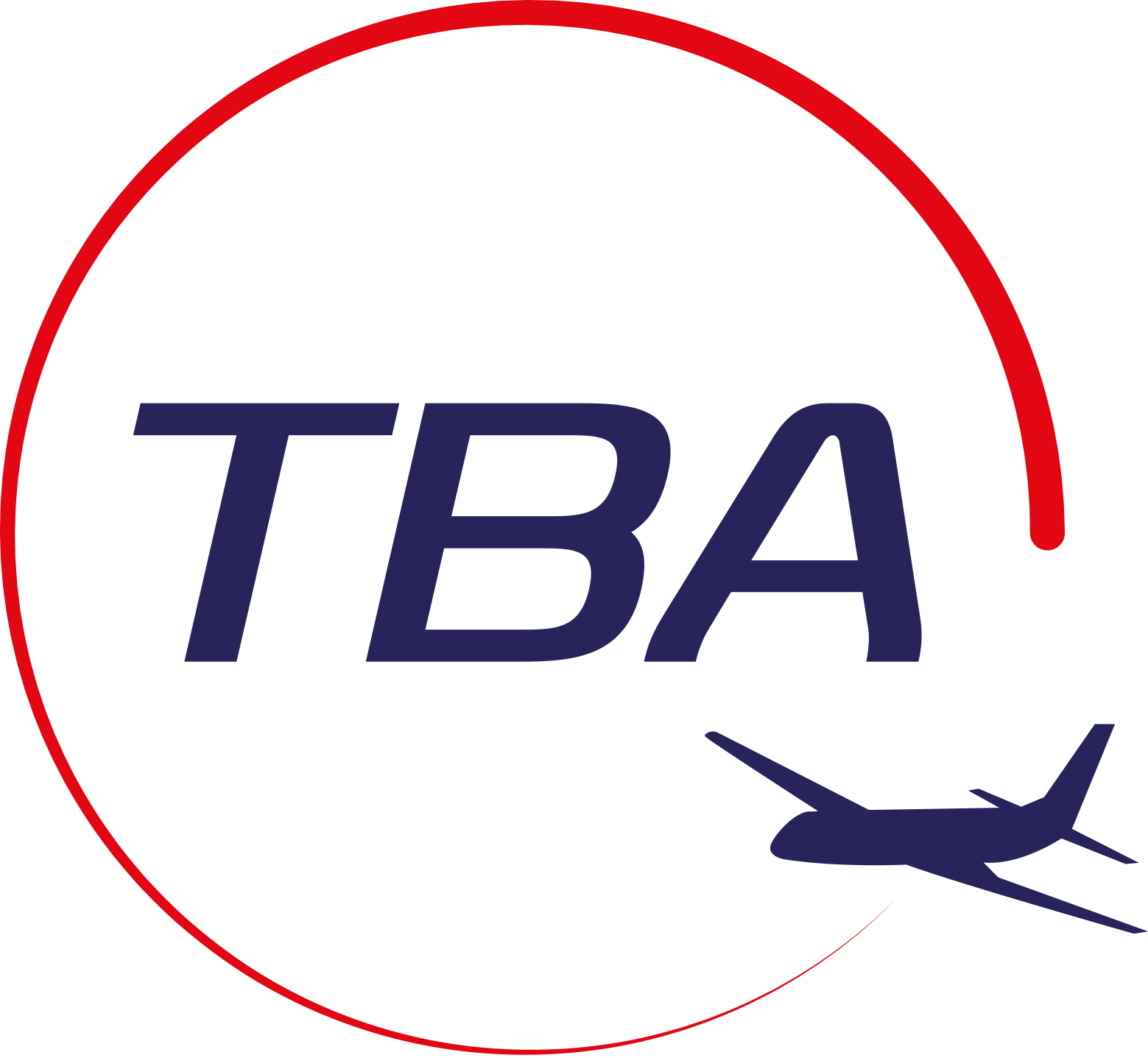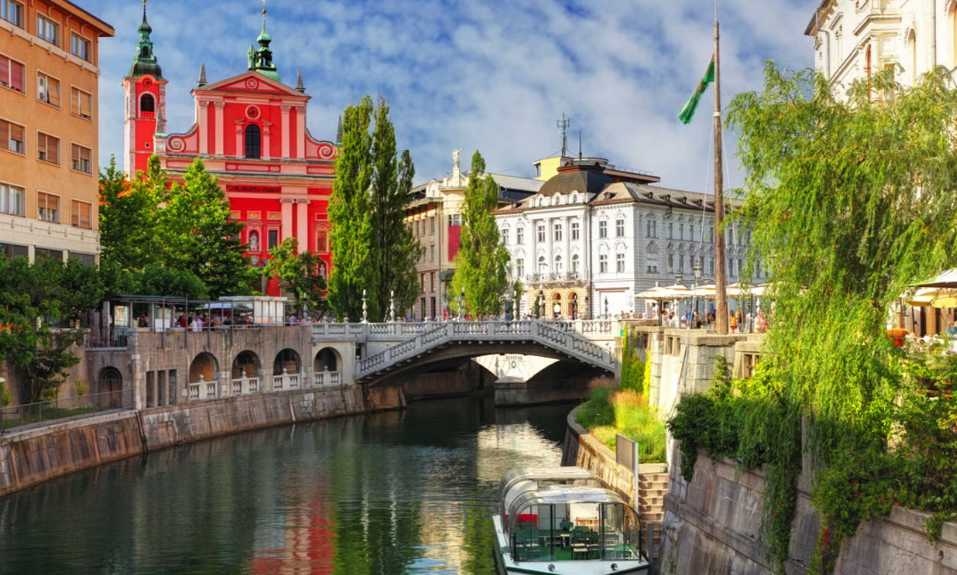
Research and knowledge are the first steps for Croatia Travel Business Assistance. Here is a fact file for France to get you started. Contact us if you are looking to start a business in or expand your market to France. We have consultants ready to help you on the ground in France.
Overcome language and cultural barriers effortlessly – Schedule your complimentary consultation call with Travel Business Assistance today.
Basic Facts
The Origin of the Name
The name “Slovenia” derives from the Slavic word Slověne, which was historically used to describe the Slavic people. The term began to be used more commonly during the medieval period, representing the ethnic identity of the Slavic population inhabiting the region. Over time, the name evolved to specifically refer to the territory and people of modern Slovenia.
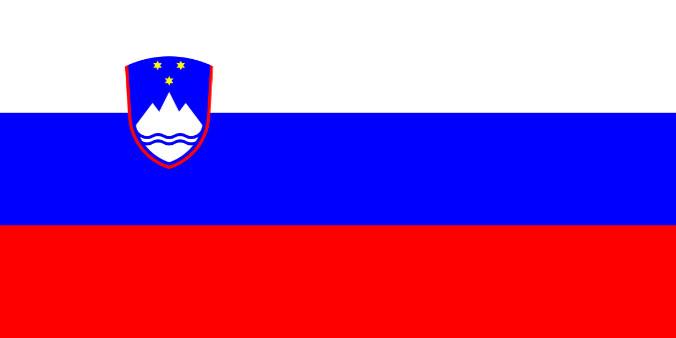
Slovenia’s Flag
Slovenia’s flag consists of three horizontal stripes of white, blue, and red, which are traditional Pan-Slavic colours. The national coat of arms is featured in the upper left corner. The coat of arms displays Mount Triglav, Slovenia’s highest peak, depicted in white against a blue background, with wavy blue lines representing the Adriatic Sea and Slovenian rivers. Three six-pointed stars arranged in an inverted triangle are above the mountain, which are taken from the coat of arms of the Counts of Celje, the great Slovene dynastic house of the late 14th and early 15th centuries. The flag reflects both the country’s natural beauty and its historical and cultural heritage.
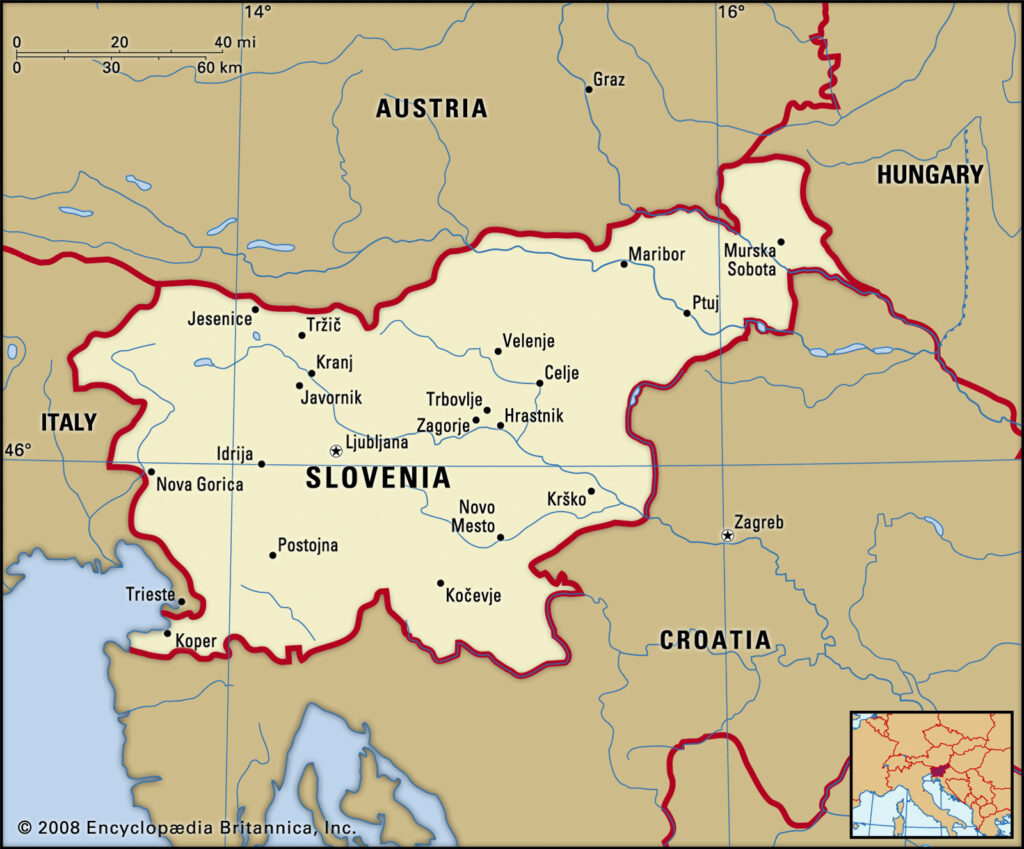
Geography & Location:
Slovenia is a small but diverse country located in Central Europe, bordered by Italy to the west, Austria to the north, Hungary to the northeast, Croatia to the southeast, and the Adriatic Sea to the southwest. Its landscape is characterized by a mix of Alpine mountains, rolling hills, dense forests, and a short but picturesque coastline along the Adriatic Sea.
Capital:
Ljubljana
Population:
Approximately 2.1 million (2024)
Area:
20,273 square kilometres (7,827 square miles)
Official Language:
Slovenian
Currency:
Euro (EUR)
Time Zone:
Central European Time (CET) UTC+1
Daylight Saving Time (CEST) UTC+2
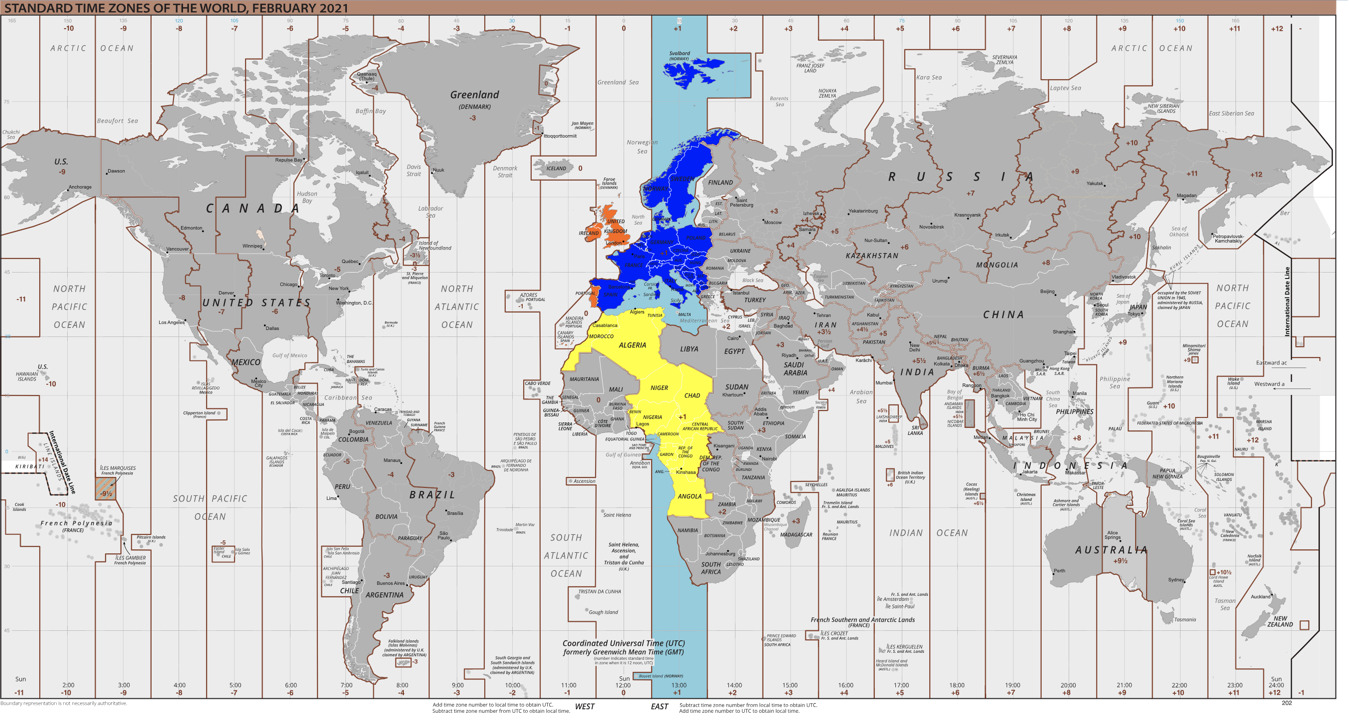
International Dialling Code:
+386
Major Airports:
- Ljubljana Jože Pučnik Airport (LJU), Ljubljana
- Maribor Edvard Rusjan Airport (MBX), Maribor
- Portorož Airport (POW), Portorož
Climate:
Slovenia has a varied climate due to its geographical diversity. The coastal region enjoys a Mediterranean climate, with mild winters and hot, dry summers. Inland areas experience a continental climate, characterized by cold winters and warm summers. The Alpine region in the north has a mountain climate with significant snowfall in winter, making it a popular destination for skiing.
Major Cities:
Ljubljana
The capital and largest city, Ljubljana is known for its vibrant cultural scene, historic architecture, and green spaces. The Ljubljanica River, which flows through the city, adds to its charm.
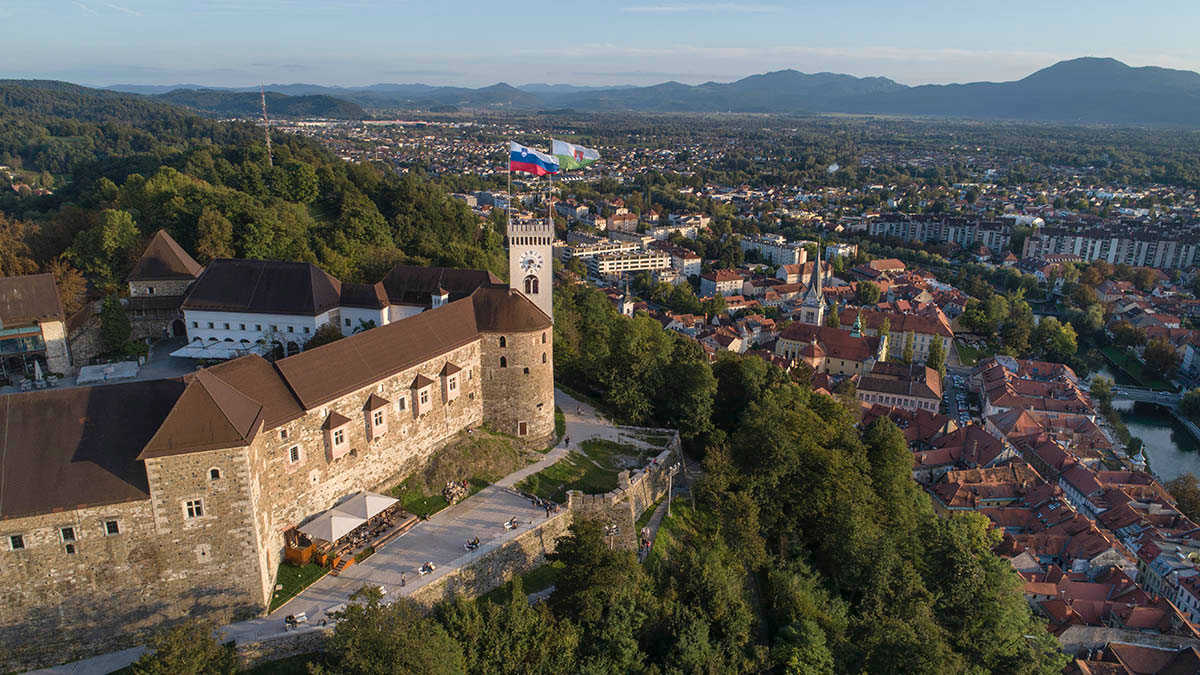
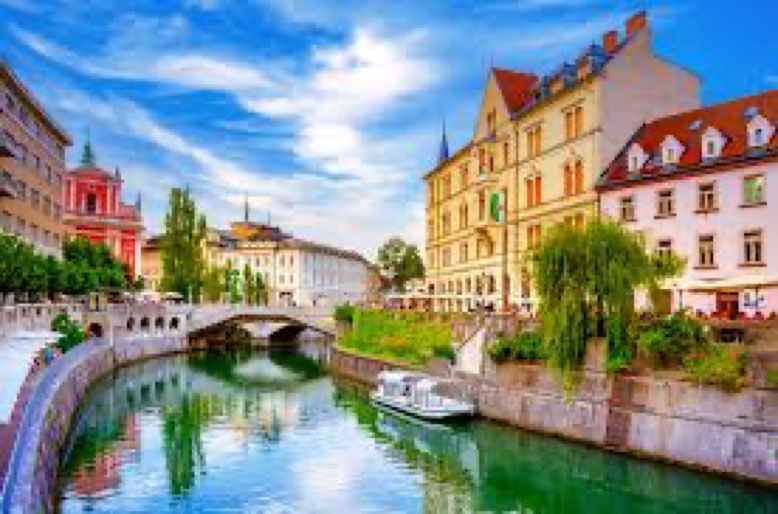
Maribor
The second-largest city, Maribor is a cultural hub known for its wine production, particularly the world’s oldest grapevine, and its annual Lent Festival.
Celje
A historic city with a well-preserved medieval castle, Celje offers a blend of cultural heritage and modern amenities.
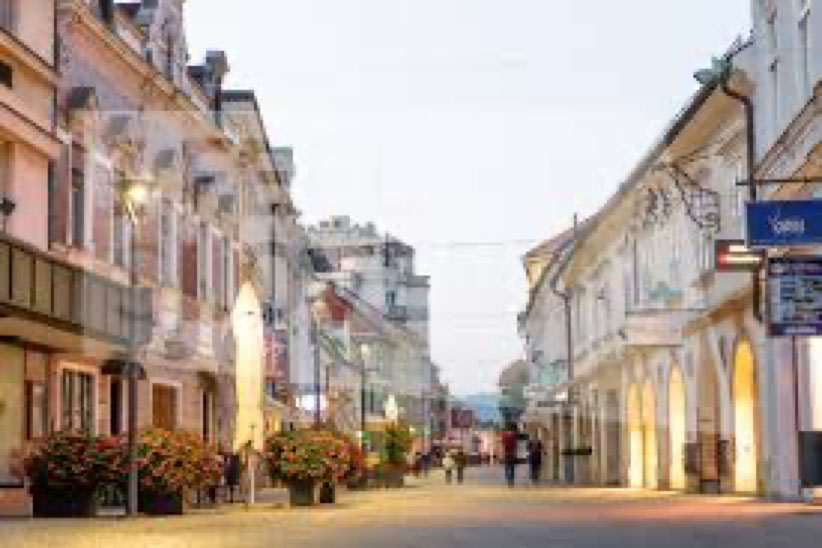
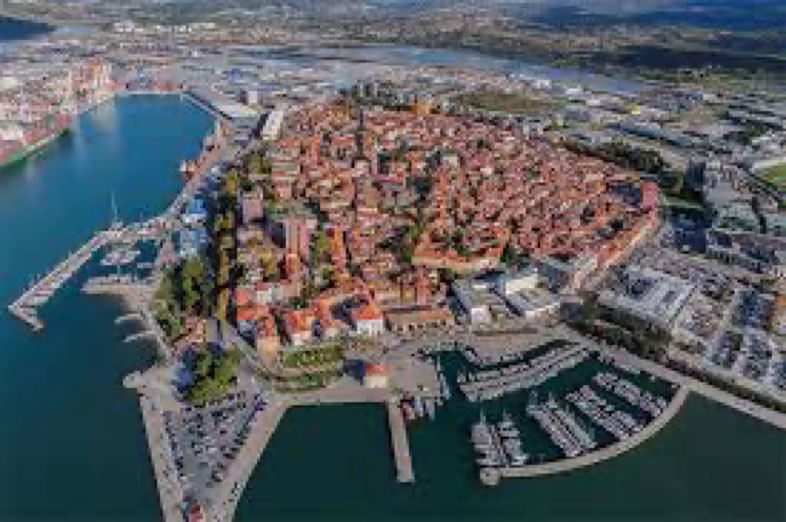
Koper
A coastal city and major port, Koper is known for its Venetian architecture and serves as a gateway to the Slovenian Riviera.
Novo Mesto
Located in the southeastern part of Slovenia, Novo Mesto is known for its Baroque architecture, rich cultural traditions, and the Krka River that runs through it.
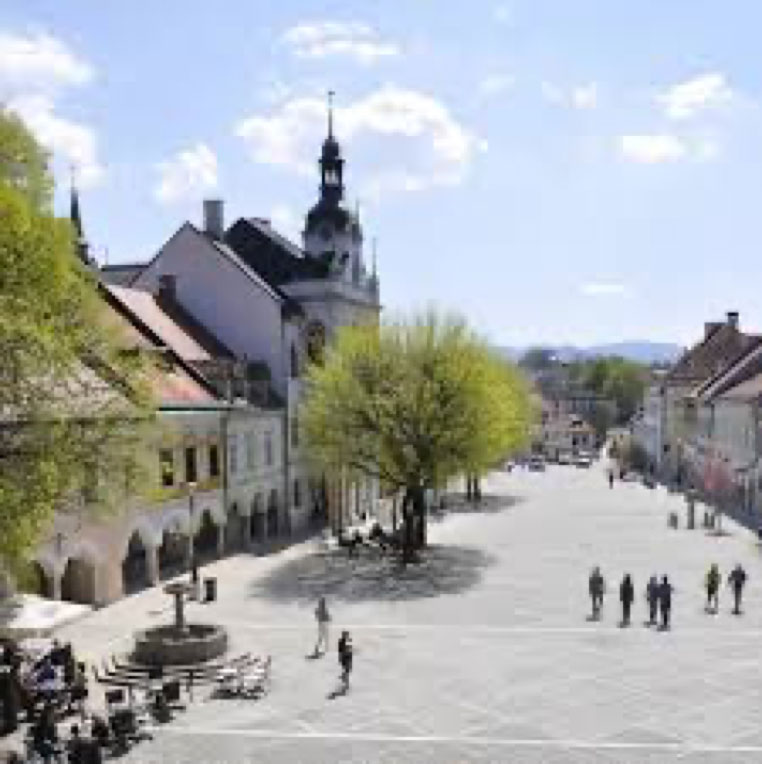
Ljubljana: The Capital of Slovenia
Ljubljana, Slovenia’s capital and largest city, is known for its picturesque charm, blending a rich cultural history with modern urban vibrancy. Located along the Ljubljanica River, this city serves as Slovenia’s political, economic, and cultural centre.
History and Heritage:
Ljubljana’s history stretches back to Roman times, when it was known as Emona. However, the city’s modern identity was shaped by centuries of European influence, from the Habsburg Monarchy to its time as part of Yugoslavia. Today, Ljubljana is a vibrant capital, famous for its green spaces, Baroque architecture, and the iconic Ljubljana Castle overlooking the city.
Business in Ljubljana:
Ljubljana is the economic centre of Slovenia, accounting for a significant portion of the nation’s GDP. The city is known for its strong service sector, particularly in finance, insurance, and real estate, along with a growing technology sector.
Key Insights for Doing Business in Ljubljana:
- Strategic Location: Ljubljana’s central location within Europe makes it a key hub for trade between Western Europe and the Balkans. Its proximity to major European cities, combined with well-developed transport infrastructure, supports business connectivity.
- Startups and Innovation: Ljubljana has a growing reputation for fostering innovation and entrepreneurship. The city supports startups, particularly in the tech and green energy sectors, through various initiatives, incubators, and innovation hubs like Technology Park Ljubljana.
- Quality of Life: Ljubljana is frequently ranked as one of the greenest and most liveable cities in Europe. The city’s high quality of life, combined with a multilingual and educated workforce, makes it an attractive location for both businesses and expatriates.
- Infrastructure: The city offers modern infrastructure, including the Jože Pučnik Airport, which connects Ljubljana to major European capitals. Its public transportation system is efficient, contributing to Ljubljana’s reputation as a sustainable, business-friendly city.
- Challenges: While Ljubljana offers many advantages, businesses can encounter bureaucratic hurdles and a legal system that can be slow-moving. As in many other Central European countries, navigating administrative processes can be complex.
Overall, Ljubljana combines the advantages of a vibrant, modern capital with a strategic location and a commitment to innovation, making it a growing centre for business in the region.
Government:
Parliamentary Republic, with President as Head of State and Prime Minister as Head of Government.
Religion:
Predominantly Roman Catholic (approximately 73%), with small communities of Protestants, Orthodox Christians, Muslims, and Jews.
Economy:
Slovenia has a well-developed, high-income economy that benefits from its strategic location in Central Europe, skilled workforce, and strong industrial base. Key sectors include manufacturing, pharmaceuticals, automotive parts, electronics, and information technology. Slovenia is also known for its green economy, with a strong focus on sustainability and environmental protection.
Tourist Attractions:
- Plitvice Lakes National Park: A UNESCO World Heritage site, famous for its terraced lakes and waterfalls surrounded by lush forests.
- Dubrovnik Old Town: Enclosed by medieval walls, this historic city is a popular filming location and offers stunning views of the Adriatic Sea.
- Hvar Island: Known for its beautiful beaches, lavender fields, and vibrant nightlife, Hvar is a popular destination for both relaxation and adventure.
- Krka National Park: Renowned for its waterfalls and crystal-clear lakes, Krka offers scenic walking trails and opportunities for swimming.
- Istria Peninsula: This region is famous for its picturesque coastal towns, hilltop villages, and culinary delights, including truffles and fine wines.
Cultural Highlights:
- Folk Traditions: Croatia has a rich heritage of folk music, dance, and costume, particularly in rural areas. Traditional festivals and events celebrate these cultural expressions.
- Cuisine: Croatian cuisine varies by region, with Mediterranean influences along the coast and more hearty, Central European dishes inland. Popular dishes include Peka (meat or seafood cooked under a bell-shaped lid), Sarma (cabbage rolls), and Štrukli (a pastry filled with cheese).
Transportation:
- Road: Croatia boasts a well-developed road network, including modern motorways that connect major cities and tourist destinations.
- Rail: The rail network links major cities and regions, though services may be slower than in some Western European countries.
- Ferries: Extensive ferry services connect the mainland to various Adriatic islands, making island hopping a popular activity.
- Public Transport: Zagreb and other major cities offer efficient public transport systems, including buses and trams.
Visas:
- EU/EEA Citizens: No visa required.
- Other Nationalities: Visa requirements vary by country. Croatia is part of the Schengen Area, so Schengen visa regulations apply.
Health & Safety:
- Healthcare: Croatia has a well-established healthcare system with hospitals and clinics in major cities. EU citizens can use the European Health Insurance Card (EHIC) for emergency treatment.
- Safety: Croatia is considered a safe country for travellers, with low crime rates. Standard precautions should be taken, particularly in crowded tourist areas.
Tourist Attractions:
Lake Bled
A picturesque lake with a church on an island and a medieval castle perched on a cliff, Lake Bled is one of Slovenia’s most iconic tourist destinations.
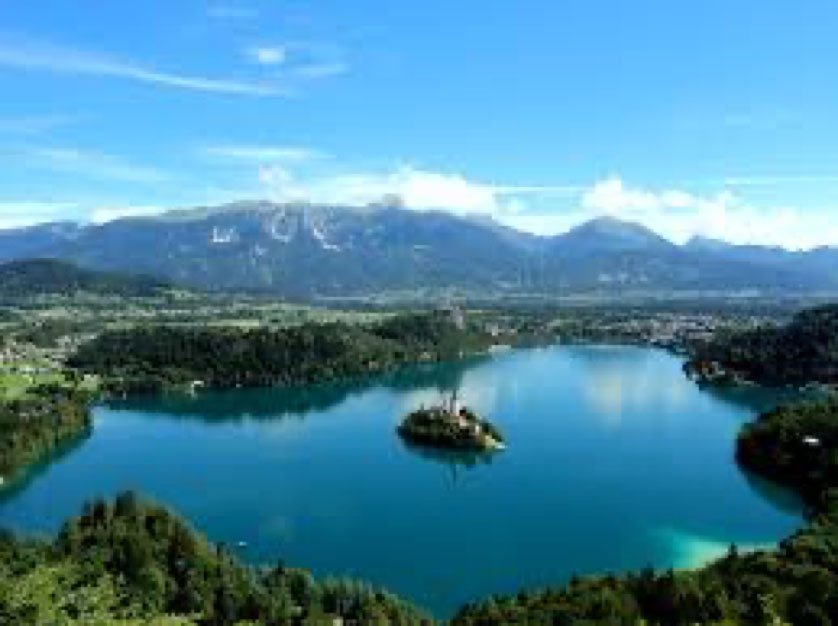

Ljubljana Castle
Overlooking the capital, this medieval fortress offers panoramic views of the city and hosts various cultural events and exhibitions.
Postojna Cave
One of the largest and most visited cave systems in Europe, famous for its underground train ride and stunning stalactite formations.
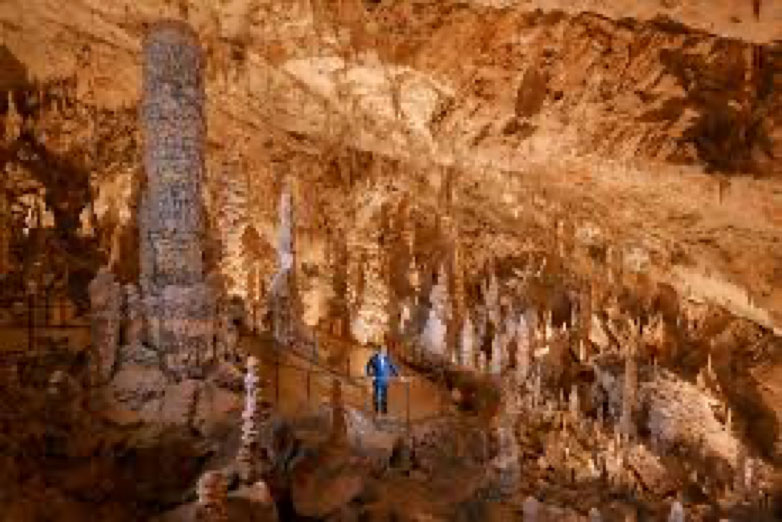
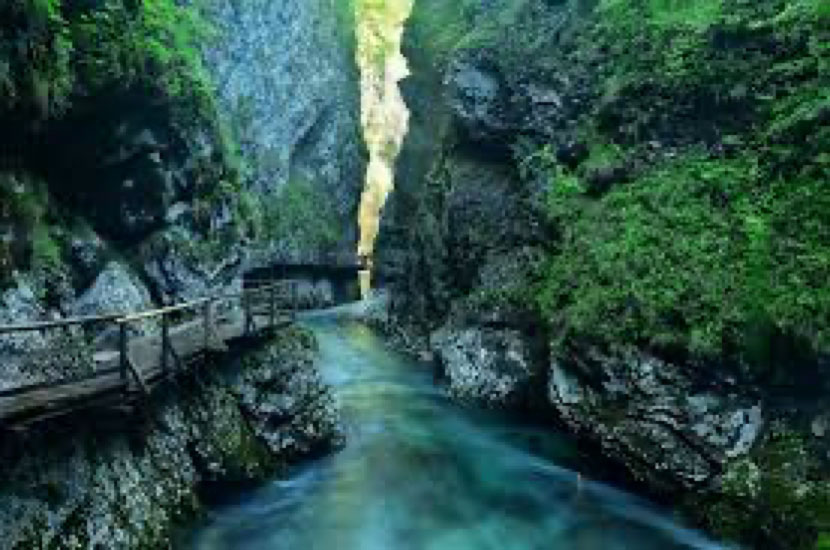
Triglav National Park
Covering most of the Julian Alps, this park is named after Mount Triglav, Slovenia’s highest peak, and offers numerous outdoor activities, including hiking, climbing, and skiing.
Piran
A coastal town on the Adriatic, known for its well-preserved medieval architecture and picturesque setting on a narrow peninsula.
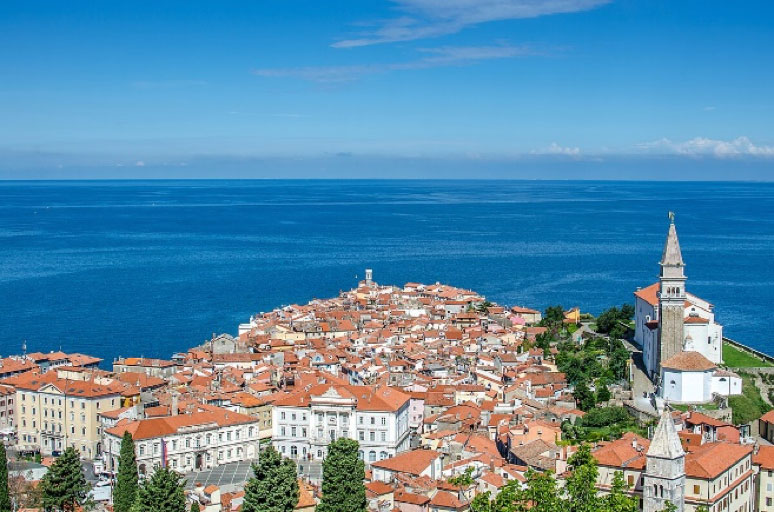
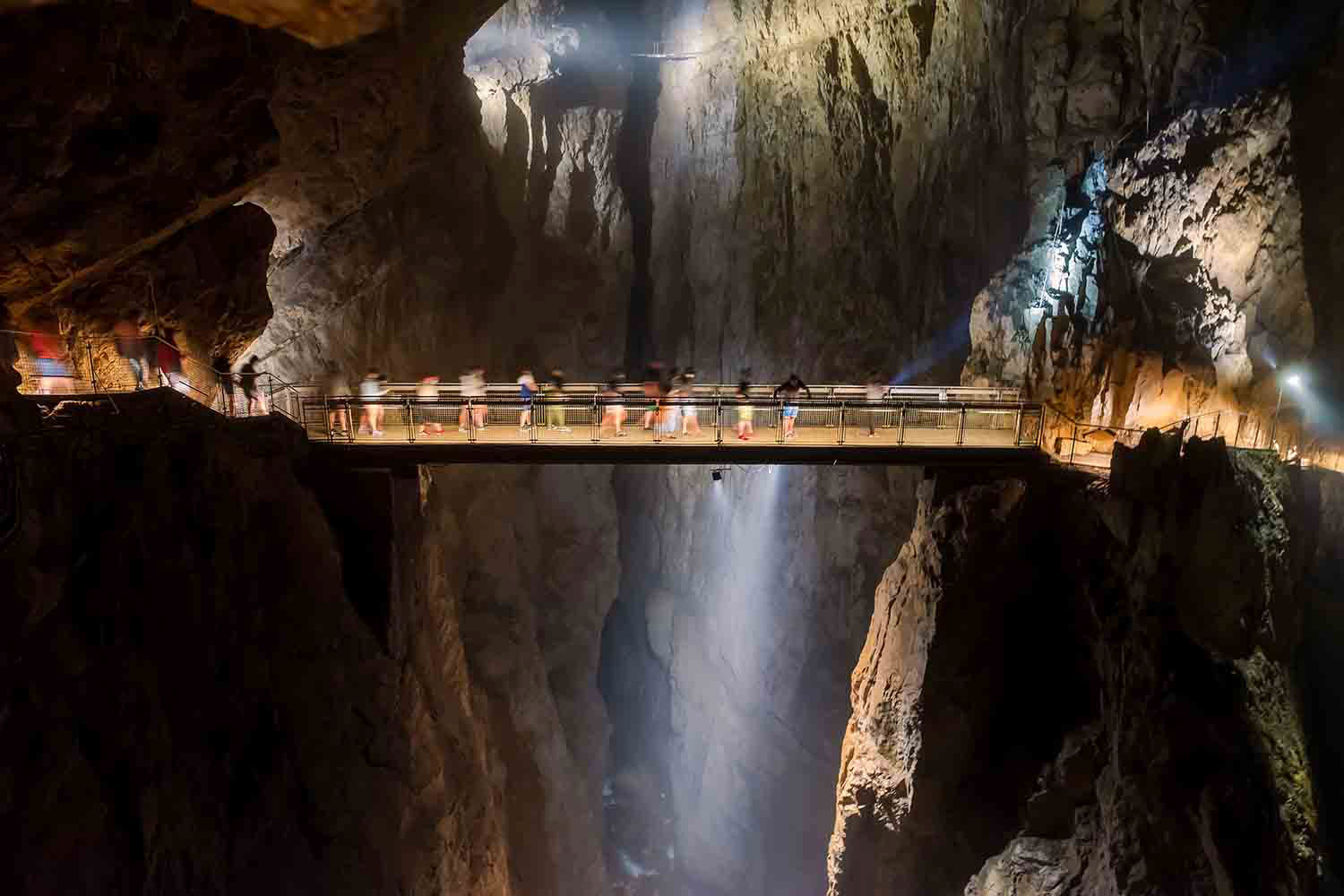
Škocjan Caves
A UNESCO World Heritage site, these caves are famous for their unique karst landscape and underground river.
Cultural Highlights:
- Folk Traditions: Slovenia has a rich tradition of folk music, dance, and crafts, with regional festivals celebrating these cultural practices.
- Cuisine: Slovenian cuisine is diverse, reflecting its geographic and cultural influences. Dishes like potica (a rolled pastry filled with nuts), žganci (buckwheat porridge), and kranjska klobasa (Carniolan sausage) are popular. Slovenian wines, particularly from the regions of Goriška Brda and the Vipava Valley, are highly regarded.
Transportation:
- Road: Slovenia has a modern and well-maintained road network, including motorways that connect major cities and neighbouring countries.
- Rail: The rail network is extensive, connecting Slovenia to Austria, Italy, Hungary, and Croatia. Train services are reliable but can be slower compared to Western European standards.
- Public Transport: Ljubljana and other major cities have efficient public transport systems, including buses and increasingly popular cycling infrastructure.
Visas:
- EU/EEA Citizens: No visa required.
- Other Nationalities: Visa requirements vary by country. Slovenia is part of the Schengen Area, so Schengen visa regulations apply.
Health & Safety:
- Healthcare: Slovenia has a high-quality healthcare system, with universal coverage and a well-regarded network of hospitals and clinics. EU citizens can use the European Health Insurance Card (EHIC) for emergency treatment.
- Safety: Slovenia is one of the safest countries in Europe, with low crime rates and a peaceful environment. Travelers should take standard precautions, particularly in tourist areas.
Electricity:
230V, 50Hz. Plug types C and F are used.
Best Time to Visit:
Late spring (May-June) and early autumn (September-October) are the best times to visit Slovenia, offering mild weather and fewer crowds. Winter (December-March) is ideal for skiing and other winter sports in the Alpine regions.
Emergency Numbers:
- Police: 113
- Fire Department: 112
- Ambulance: 112
- Emergency Services (general): 112
Cultural Etiquette:
- Greetings: A handshake is the common greeting in formal settings, while close friends may greet each other with a kiss on both cheeks.
- Language: While Slovene is the official language, English is widely spoken, especially in business and tourist areas.
- Tipping: Tipping is appreciated but not obligatory.
Key Points in Slovenia’s History
- Early History: The area of present-day Slovenia has been inhabited since prehistoric times, with evidence of early human settlements and Neolithic cultures. The region was later part of the Roman Empire, leaving a rich legacy of Roman architecture and roads.
- Slavic Settlement: In the 6th century, Slavic tribes settled in the region, laying the foundation for the Slovenian ethnic identity. The Duchy of Carantania, established in the 7th century, is one of the earliest known Slavic states.
- Medieval Period: Throughout the medieval period, Slovenia was divided among various feudal lords and became part of the Holy Roman Empire. The region was heavily influenced by Germanic culture and language, particularly under the Habsburgs.
- Habsburg Rule: For several centuries, Slovenia was part of the Habsburg Monarchy, which later became the Austro-Hungarian Empire. This period saw the development of a distinct Slovenian cultural identity, with the emergence of Slovenian literature and the codification of the Slovene language.
- National Awakening: The 19th century was marked by the Slovenian national awakening, a cultural and political movement advocating for greater recognition of Slovene identity within the Austro-Hungarian Empire.
- World War I: Slovenia was on the front lines of World War I, with significant battles fought along the Soča River. After the war, the collapse of the Austro-Hungarian Empire led to the creation of the Kingdom of Serbs, Croats, and Slovenes, later known as Yugoslavia.
- World War II: During World War II, Slovenia was occupied by Nazi Germany, Fascist Italy, and Hungary. The resistance movement was strong, leading to significant losses but also contributing to the liberation of the country.
- Socialist Yugoslavia: After the war, Slovenia became one of the republics of socialist Yugoslavia under Josip Broz Tito. This period was characterized by economic development and modernization, though it also involved political repression.
- Independence: In 1991, Slovenia declared independence from Yugoslavia, leading to a brief ten-day war. Slovenia’s peaceful and swift exit from Yugoslavia contrasted with the violent conflicts in other parts of the former federation.
- EU and NATO Membership: Slovenia joined the European Union and NATO in 2004, marking a significant step in its integration into Western political and economic structures. The country has since been an active member of the EU, contributing to regional stability and growth.
Fun Things to Do in Slovenia
- Slovenia is a treasure trove of experiences, offering everything from dramatic mountain landscapes to charming medieval towns. Begin your adventure at Lake Bled, where you can row to the picturesque island in the middle of the lake, ring the wishing bell at the church, and hike up to Bled Castle for stunning views. Don’t forget to treat yourself to the famous Bled cream cake at a lakeside café.
- For outdoor enthusiasts, the Julian Alps are a must-visit. Hike to the summit of Mount Triglav, Slovenia’s highest peak, or explore the lush valleys of the Triglav National Park. In winter, these mountains transform into a skiing paradise, with resorts like Kranjska Gora offering excellent slopes for all levels. If you’re into water sports, head to the emerald-green Soča River, where you can enjoy kayaking, rafting, or fly-fishing in one of Europe’s most beautiful rivers.
- Slovenia’s underground wonders are equally impressive. Visit the Postojna Cave, where a thrilling underground train ride takes you through a labyrinth of tunnels and stunning stalactite formations. Nearby, the dramatic Predjama Castle, built into a mountain, is a sight to behold. Another natural marvel is the Škocjan Caves, a UNESCO World Heritage site, known for its giant underground canyon.
- Explore Slovenia’s vibrant capital, Ljubljana, where you can stroll along the Ljubljanica River, visit the lively Central Market, and enjoy the view from Ljubljana Castle. The city’s green spaces, like Tivoli Park, are perfect for a relaxing afternoon, while its buzzing café culture and lively arts scene make it a great place to soak up local life.
- Wine lovers should head to the rolling vineyards of Goriška Brda, often called the “Tuscany of Slovenia,” where you can taste world-class wines and enjoy the stunning countryside. In the coastal town of Piran, explore the Venetian-style architecture, climb the bell tower for panoramic views, and enjoy fresh seafood by the sea.
- From its picturesque lakes and majestic mountains to its charming towns and vibrant capital, Slovenia is packed with exciting activities and breathtaking sights, making it a must-visit destination for any traveller.
Doing Business in Slovenia
Ease of Doing Business Score:
In the World Bank’s 2020 Ease of Doing Business report, Slovenia ranked 37th out of 190 economies. The country is noted for its efficient trading across borders, good infrastructure, and relatively low levels of corruption.
Why Invest in Slovenia?
- Strategic Location:
Situated at the heart of Europe, Slovenia serves as a gateway between Western Europe, the Balkans, and Central Europe. This strategic location makes it an ideal base for businesses looking to access multiple markets across the continent. - EU and Eurozone Membership:
Slovenia has been a member of the European Union since 2004 and adopted the euro in 2007. This provides investors with the advantages of a stable currency, access to EU funding, and a harmonized regulatory environment, making it easier to do business across Europe. - Highly Educated Workforce:
Slovenia boasts a well-educated and multilingual workforce, particularly strong in sectors such as engineering, information technology, and manufacturing. The country’s emphasis on education and vocational training ensures a steady supply of skilled labour for businesses. - Advanced Infrastructure:
Slovenia has a well-developed infrastructure, including modern road and rail networks, ports, and telecommunications systems. The Port of Koper is a significant maritime hub for international trade, providing efficient access to the Mediterranean and beyond. - Innovation and R&D:
Slovenia is known for its strong emphasis on research and development, particularly in fields like biotechnology, pharmaceuticals, and environmental technologies. The government offers incentives for R&D activities, making Slovenia an attractive destination for innovative companies. - Green Economy:
Slovenia is recognized for its commitment to sustainability and environmental protection. The country has a growing green economy, with opportunities in renewable energy, eco-tourism, and green technologies. Slovenia’s focus on sustainability aligns with global trends, attracting investors in environmentally friendly industries. - Government Support:
The Slovenian government offers various incentives for foreign investors, including tax reliefs, subsidies for job creation, and grants for R&D projects. Slovenia also has free economic zones that provide additional benefits such as customs exemptions and reduced taxes. - Quality of Life:
Slovenia offers a high quality of life, with a safe environment, excellent healthcare, and good educational institutions. The country’s natural beauty and cultural heritage also make it an attractive location for expatriates and their families.
Challenges:
- Small Market Size: As a relatively small country with a population of just over 2 million, Slovenia’s domestic market is limited. Companies looking to invest should consider export-oriented strategies.
- Regulatory Complexity: While Slovenia has made strides in improving its business environment, some regulatory processes, particularly in construction and obtaining permits, can be complex and time-consuming.
Labour Costs:
While Slovenia offers a skilled workforce, labour costs are higher than in some neighbouring countries, which may impact competitiveness in certain sectors.
Croatia Travel Business Assistance
Are you planning to move your business to France or open up France as a new market? Perhaps there is a conference in France you need to attend and you need some help. We are here for your France Travel Business Assistance.
